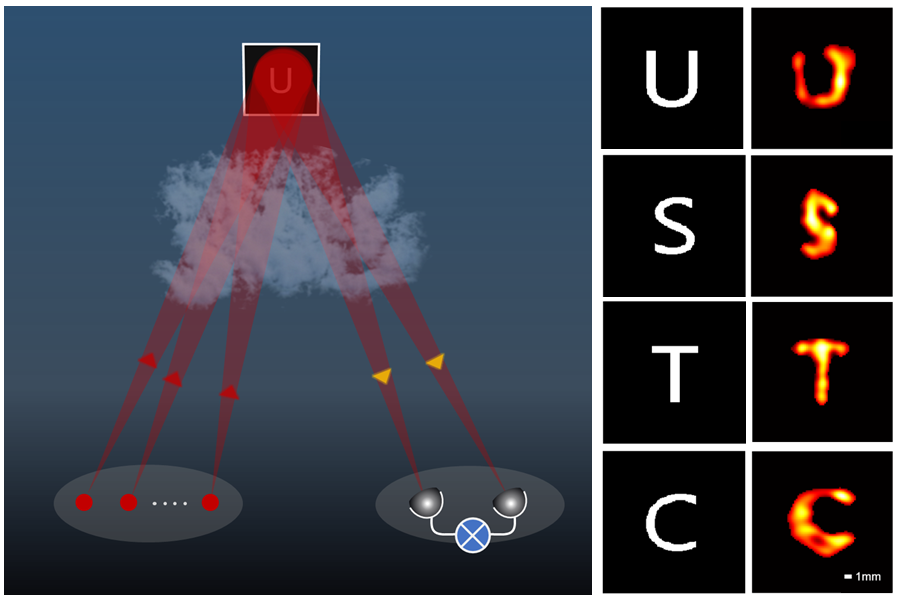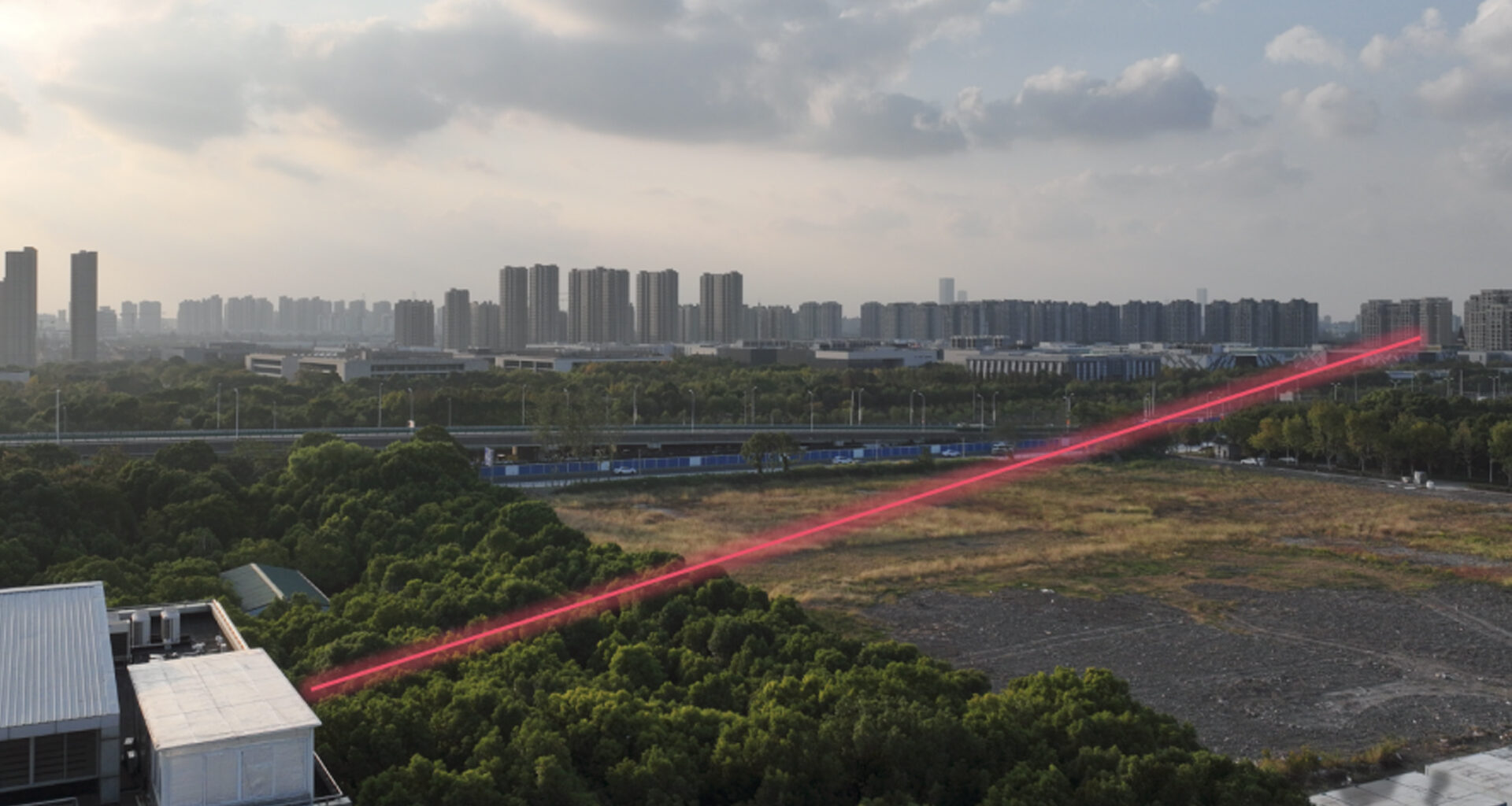Imagine standing on one side of a large valley and being able to read a label on a bottle sitting on the opposite hill, without using a camera, telescope, or binoculars.
Sounds like a scene from a spy movie, right? Well, you’d be surprised to know that scientists in China have just made it real. They have developed a new laser-based system that can clearly pick up small details, like millimeter-sized text, from a distance of 1.36 kilometers (about 0.85 miles), which is roughly 14 football fields away.
This laser-based imaging system could be of great use in many fields. For instance, it might allow archaeologists to examine ancient carvings on cliffs without climbing them, and help environmental researchers monitor distant wildlife habitats.
The science of long-distance reading
 The laser system reconstructing letters (right) located far away. Source: L.-C. Liu et al.
The laser system reconstructing letters (right) located far away. Source: L.-C. Liu et al.
Until now, reading fine details from long distances has been a major challenge. Telescopes and high-power lenses struggle with distortion from the air, which blurs and scatters light over long distances.
That makes it nearly impossible to pick out small features, like printed text. However, the new approach overcomes those problems by focusing not on the image itself, but on the way light behaves when it hits and bounces off a surface.
This method is called active intensity interferometry. Here’s how the researchers used for their long-distance reading experiment:
The study authors first aimed eight infrared laser beams at the distant target. The light reflected off the target was then collected by two separate telescopes, placed apart from each other.
The telescopes didn’t just record an image, they tracked how the light intensity shifted slightly from moment to moment. Next, the researchers used computer algorithms to process those shifting patterns and reconstruct the fine details of the target surface, including small letters just three millimeters tall.
According to the researchers, a standard telescope system at the same distance would only capture shapes around 42 millimeters in size, which is far too large to make out small writing.
“Through outdoor experiments, we have successfully imaged millimeter-scale targets located at 1.36 km away, achieving a resolution enhancement by about 14 times over the diffraction limit of a single telescope,” the study authors note.
The laser-based system is great, but not perfect
The researchers suggest that though active intensity interferometry looks “promising for high-resolution optical imaging and sensing,” it is yet to overcome several limitations to realize its true potential.
For instance, the current long-distance reading system requires precise alignment of lasers and telescopes, which might be cumbersome for some applications.
Plus, it needs a clear line of sight to the object, and the target must be illuminated with lasers. So it might not be suitable for all scenarios, especially where stealth is required.
However, the team is already working on making it better. Their next goals include improving how the lasers are controlled and using AI-powered algorithms to reconstruct images even more accurately.
The study is published in the journal Physical Review Letters.
